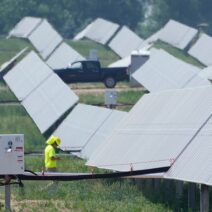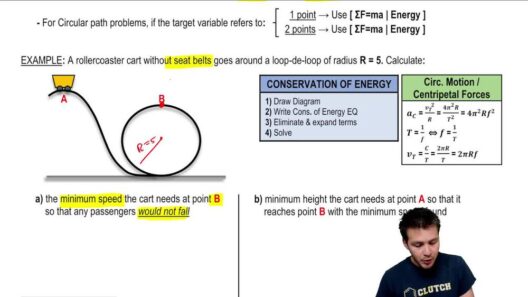When delving into the realm of classical mechanics, one encounters the fundamental concept of kinetic energy. Defined as the energy possessed by an object due to its motion, this form of energy is pivotal in understanding the dynamics of isolated systems. An isolated system, by definition, refers to a collection of entities that interact through forces but do not exchange energy or matter with their surroundings. In such systems, the inquiry arises: is kinetic energy conserved? To navigate this question, it is essential to explore the nuances of energy conservation and the conditions under which kinetic energy may or may not remain invariant.
At its core, the principle of conservation of energy states that the total energy within an isolated system remains constant over time. Energy cannot be created or destroyed; it can only be transformed from one form to another. This fundamental law underpins much of physics and provides an essential framework for both theoretical explorations and practical applications. However, kinetic energy is uniquely sensitive to specific conditions. The investigation of whether kinetic energy is conserved in isolated systems requires a closer examination of the forces and interactions at play.
In elastic collisions, the total kinetic energy of the system before and after the interaction remains constant. Such a scenario occurs when two objects collide without any deformities or conversion of energy into other forms, such as thermal energy. Classical examples include the interactions of billiard balls, where each collision preserves the sum of their kinetic energies. Throughout this interaction, momentum is also conserved, which highlights an interdependent relationship between these two properties.
Conversely, in inelastic collisions, kinetic energy is not conserved. During such collisions, some kinetic energy is transformed into other forms of energy, such as heat, sound, or potential energy resulting from deformation. An everyday example of an inelastic collision is a car accident, where kinetic energy dissipates through the crumpling of metal and the generation of sound. This distinction is not merely academic; it has profound implications for fields such as engineering, automotive safety, and material science.
Understanding kinetic energy conservation also extends to rotational systems. In the case of rotating bodies, the principle of conservation remains intact if we consider the complete angular momentum and energy of the system. However, if energy dissipates through friction or other non-conservative forces, the kinetic energy associated with rotational motion does not remain constant. This introduces another layer of complexity, particularly in applications such as planetary motion or even in the simple act of a spinning top.
Moreover, the potential for kinetic energy conservation is notably influenced by external parameters. For instance, consider a pendulum in an isolated system; as it swings through its arc, kinetic energy transforms into potential energy at its peak height and then back into kinetic energy as it descends. Under ideal conditions—neglecting air resistance and frictional losses—the total mechanical energy, the sum of kinetic and potential energies, is conserved. Such phenomena cultivate a more profound understanding of energy conservation across various physical scenarios.
Another fascinating aspect of kinetic energy conservation can be gleaned from the behavior of gases in thermodynamics. In a gas composed of numerous particles, the collective kinetic energy can be analyzed through the lens of temperature. An increase in temperature correlates with heightened particle motion and, thus, an augmentation of kinetic energy. When isolated from external energy influx, these gas particles may collide elastically or inelastically, resulting in varied behaviors that challenge our understanding of conservation laws.
The nuances surrounding kinetic energy conservation pose compelling questions. Can we reconcile instances of energy dissipation with conservation principles? Does the framework of isolated systems encompass all real-world scenarios? As scientists unravel the intricacies of kinetic energy transformation, it becomes increasingly evident that the outcomes are predicated upon the specific conditions and interactions involved in each scenario. This, in turn, encourages a critical perspective on classical principles, inviting fresh discourse and exploration.
Ecological considerations also emerge when discussing kinetic energy conservation. In the context of environmental systems, understanding energy transformations within isolated ecosystems can yield insights into sustainable practices and conservation efforts. By recognizing the delicate balance of energy exchange, we can better appreciate the impact of human activities on natural processes. The conservation of kinetic energy is not merely a mechanical principle; it serves as a metaphor for broader ecological principles, illustrating the interconnectedness of energy systems and their vulnerability to disturbances.
As we contemplate the question of whether kinetic energy is conserved in isolated systems, it becomes evident that the answer is multifaceted. While kinetic energy is conserved under certain conditions—such as in elastic collisions—the complexities of real-world interactions often lead to energy transformations and losses. By embracing this intricate tapestry of interactions, we sharpen our understanding of physics and extend that knowledge into the realms of environmental stewardship and sustainable development.
Ultimately, exploring the nuances of kinetic energy conservation in isolated systems not only satiates intellectual curiosity but also unveils a profound interconnectedness within the universe. By grasping the subtleties of energetic transitions, we illuminate pathways toward innovative solutions to contemporary challenges. This journey through the intricacies of kinetic energy preservation beckons both scientific inquiry and a deeper awareness of our role within the grand tapestry of natural systems.







